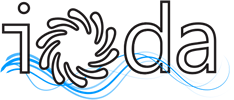Research Fellows
Marios Damigos
Early Stage Researcher 5 at Engys IT
While performing shape optimization in CFD, an optimization cycle begins by importing a CAD file and has to end by delivering the optimized geometry in a CAD file as well. CAD-free optimization tools (either we are dealing with deterministic or stochastic methods) act on the discretized geometry of the model in hand. Derivative map calculations, objective function evaluations or shape changes (morphing, topology) all happen on the discretized model (point clouds, triangulated surfaces etc.). The necessity to connect CAD to the optimization framework is even more prominent when CAD-based optimization is discussed. It is thus obvious that to connect the optimization framework to an industrial design framework in general, three main topics have to be tackled:
- CAD to Surface transition tools: Tools such as surface meshers that are used to deliver an adequate and high-quality representation of the CAD surfaces in discretized form.
- Direct CAD optimization tools: Tools that parametrize the CAD model (NURBS) in such a way that optimizing it directly while respecting various user defined constraints, is enabled.
- Mesh to CAD transition tools: In the case that the optimization is CAD free and the CAD model does not undergo direct optimization, the resulting optimized mesh has to be transformed back to CAD.
Regarding the first topic, a tool for triangulating CAD surfaces was developed based on the Advancing front method. The triangulation is performed on every patch separately, after the curves that join the patches together are discretized. An octree is used as a background mesh, so that the mesh-size Is a function of the global coordinates. The sizes are curvature based and are defined by two dimensionless parameters: an angular deflection and a growth ratio. Sizes are stored in the centre of each leaf and the smallest size always dictates the sizes of the neighbour leaves. Consequently, the advancing front algorithm starts:
- Pick a patch
- Discretize the bounding curves of the patch at hand and initialize the front.
- Pick a front edge and calculate a point so that an equilateral triangle is formed.
- Search the neighbourhood of that new point for any points that a valid triangle can be created.
- If none is found, check if a valid triangle can be created with the calculated point.
- If a triangle cannot be created so far, scan every point in the front to find a valid triangle to be created disregarding quality.
- Update the front.
- If front is empty, optimize the mesh by smoothing and edge flipping and go to 1, else go to 3. If no patches are left end the algorithm.

Regarding the second topic, the method currently developed involves adaptation of the CAD parameterization to discrete parameterization. In particular, a method called CAD morphing is created. The tool used is Volumetric NURBS, a well-known mesh – morpher. The parameters of the V-NURBS are chosen in such a way that after morphing, the new points can be re-fitted by the old NURBS surfaces. In that way, surface characteristics such as degree are maintained while the surfaces are morphed. This tool is currently in progress,
The last topic was researched upon the beginning of the project. A feasibility study for surface fitting methods based on symbolic regression as well as a survey for alternative methods was delivered. However, this objective was postponed to the end of the project.

